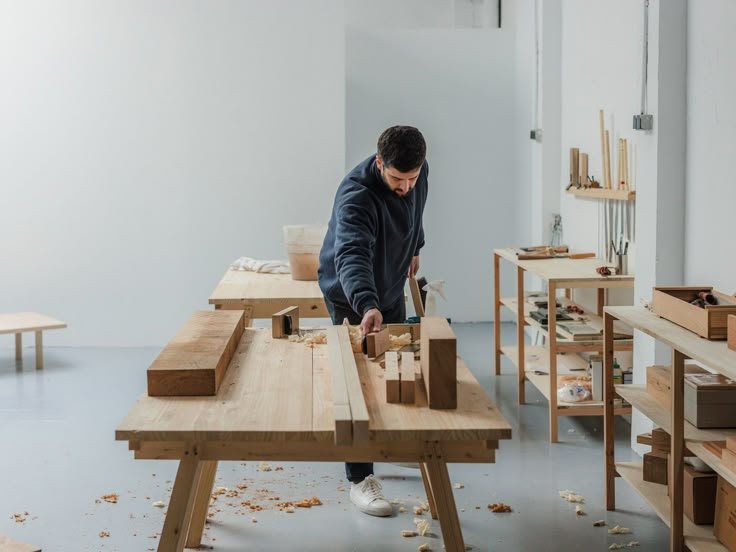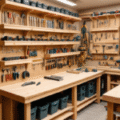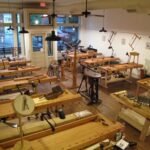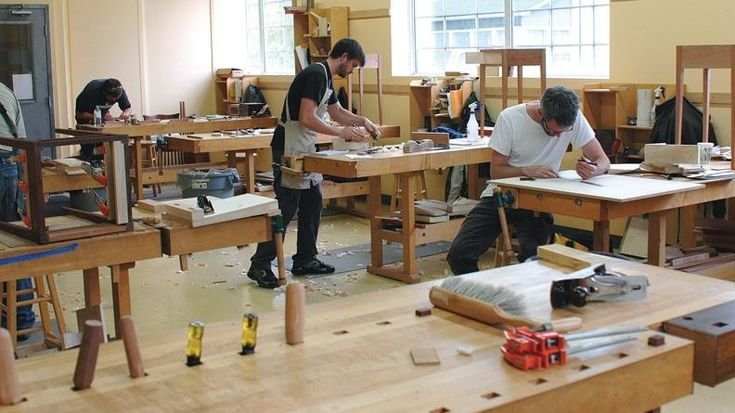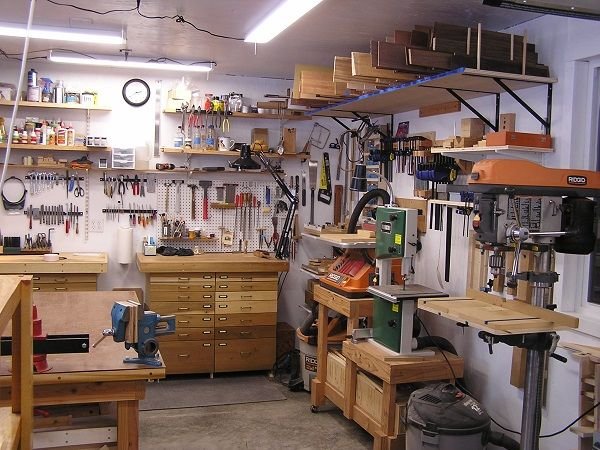The Charm of Old Woodworking Tools
Ah, nothing like a fresh cup of coffee on a crisp Saturday morning to get you thinking about those old woodworking tools tucked away in the corner of my garage. You know, those slightly rusty hand planes and saws that’ve seen better days but still have a heck of a lot of character. It’s funny how much nostalgia a simple piece of wood can evoke, and I thought I’d share a little story about my adventures—or misadventures, really—with these tools.
A Troubled Beginning
So, there I was, all fired up and ready to tackle a new shelving unit for my living room. My wife had a vision for it: something rustic to contrast with the more modern décor we barely keep up with. I figured, hey, why not use some good ol’ reclaimed pine? There’s a place out by the river that sells some rough-cut lumber, and honestly, that pine smells so good—like a campfire mixed with a hint of earthiness. You ever catch a whiff like that? It just makes you want to get out there and create something.
Anyway, I grabbed my dad’s old hand saw, a Disston from the ’50s. Now, this baby has seen its share of projects—slicing through everything from plywood to oak. I dusted it off, oiled the blade up, and got to work. That first cut? Oh man, it was like a warm knife through butter. I could practically hear my dad’s voice, nodding in approval from the beyond. That was the high point of the day.
Where Things Went South
But, as it usually does for me, trouble brewed just a pine board away. You see, I thought I’d save a few bucks and go for some of that reclaimed stuff instead of buying new, straight-off-the-shelf wood. But, let me tell you, not all reclaimed wood is equal. Some of that pine was crooked enough that it could’ve stood on its own as a piece of modern art.
I was struggling to get the dimensions right, fighting the grain, and I almost gave up when I started wrestling with a particularly stubborn piece. The more I tried to tame it, the more it fought back. The smell of sawdust hung thick in the air—almost choking me—while the sound of my tools became like a mocking symphony of failure. The rasp of the hand plane against that rough surface was almost grating, and every time I thought I’d made a good pass, I’d find a new twist in the wood that made me want to tear my hair out.
Lessons and Revelations
You know, it’s in those little moments of frustration that something really great can come out of the project. I had to remind myself to just breathe and slow down. It’s not a race, right? So there I was, back at it, hand planing away. The trick? I learned to approach the wood as if it were an old friend, not an enemy. I began to listen to it—yep, listen to wood. Every curve, every knot told its story. I laughed when it actually started to take shape. The pieces began to fit together, and I felt that delightful tingling of anticipation—like unwrapping a Christmas gift.
I also learned how to embrace imperfections. I mean, nothing in life is perfect—especially wood that’s been around for a while. A knothole here, an uneven edge there; it all contributed to the story of the wood, just like the wrinkles on my face tell tales of laughter and hard times. I started to appreciate the flaws rather than fight against them.
A Lesson in Patience
And let’s talk about sanding—oh boy, what a process! I dusted off my Finishing Touch sander, which is just about as chic as it sounds (meaning not at all). Smoothing those edges felt like therapy. The sounds of the sander buzzing away and the barely-there grin creeping onto my face as each swipe revealed fresh wood was downright satisfying. But then, just when I thought I was home free, I accidentally dropped my sander from the workbench. Ugh! The resulting nick on my newly-sanded corner was like the universe saying, “Not so fast, friend.”
In that moment of exasperation, I almost thought, maybe I should just toss it all and let the pros handle it. But nah, I couldn’t. So, I pressed on with some wood filler and a few choice curse words. Each little blemish was momentarily frustrating, yet also a reminder that this wasn’t just a project; it was a journey.
A Final Touch
Finally, after much patience (and a few more cups of coffee than I’d care to admit), I stained it a deep walnut color. When I applied that stain, the grain popped to life, and I was finally looking at something I was proud of. I chuckled a bit, thinking back on the fight I put up during the process and how silly I must’ve looked in that old garage.
As I stood there looking at my handiwork, I felt as if I had achieved more than just a shelf. I had learned to respect the wood, to embrace its imperfections, and to understand that the real beauty lies in the struggle to create something meaningful.
The Takeaway
So, if you’re ever in a similar spot, feeling overwhelmed and thinking about giving up, just know you’re not alone. I wish someone had told me this earlier: take your time, embrace the mess, and respect the journey as much as the finished piece. Old tools may not be as shiny or quick as the new gadgets, but there’s magic hidden in their rough edges.
Next time you’re contemplating a project, grab that dusty old tool from the corner—they just might surprise you. And who knows, you might end up with a story worth telling over coffee, just like this one.

